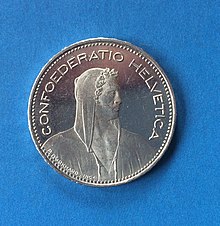Sennechutteli

The Sennechutteli is a classic piece of outerwear from the Swiss Alps . Chutteli is Swiss German and comes from the word Kutte . It is a simple, rough shirt with traditional embroidery. From the 1970s, it was also used as workwear by tourism workers in the Alps.
Emergence
The traditional shepherd (s) shirt from central Switzerland is a white shirt that was originally woven from our own flax . It is one of the oldest pieces of costume in Switzerland. It is known from the alpine shepherd on the back of the five-fliber . It was often worn longer with a leather belt or rope. The sewn on "hay cap" (type of hood) prevents hay from trickling in during work.
In the 19th century, the capless, blue “Burgundy blouse”, also known as “Welschhemp” ( Welsches shirt), came to Central Switzerland via French carters . They were popular because of their dark color, which was less dirty, and had no hats, but flaps underarms .
With richly colored embroidery on the breast slit, the armpit flaps and on the sleeve, the Sunday blouse widespread in Uri and Nidwalden was created . It is often worn over a white collar shirt.
In Prättigau , a blouse made of blue fabric with simple ringlet embroidery with red and white thread and a simple clasp was probably made at the same time .
Thanks to modern machine embroidery, inexpensive Sennechutteli made of blue, red or black fabric with edelweiss borders on the chest slit (wide) and simple embroidery on the sleeve collar and shoulder seam have come onto the market in recent decades . They are usually with a small band collar and high-necked. These are modern adaptations close to the old costumes.
literature
- Louise Witzig: Swiss costume book. Zurich 1954. pp. 52, 53, 65 and 76.